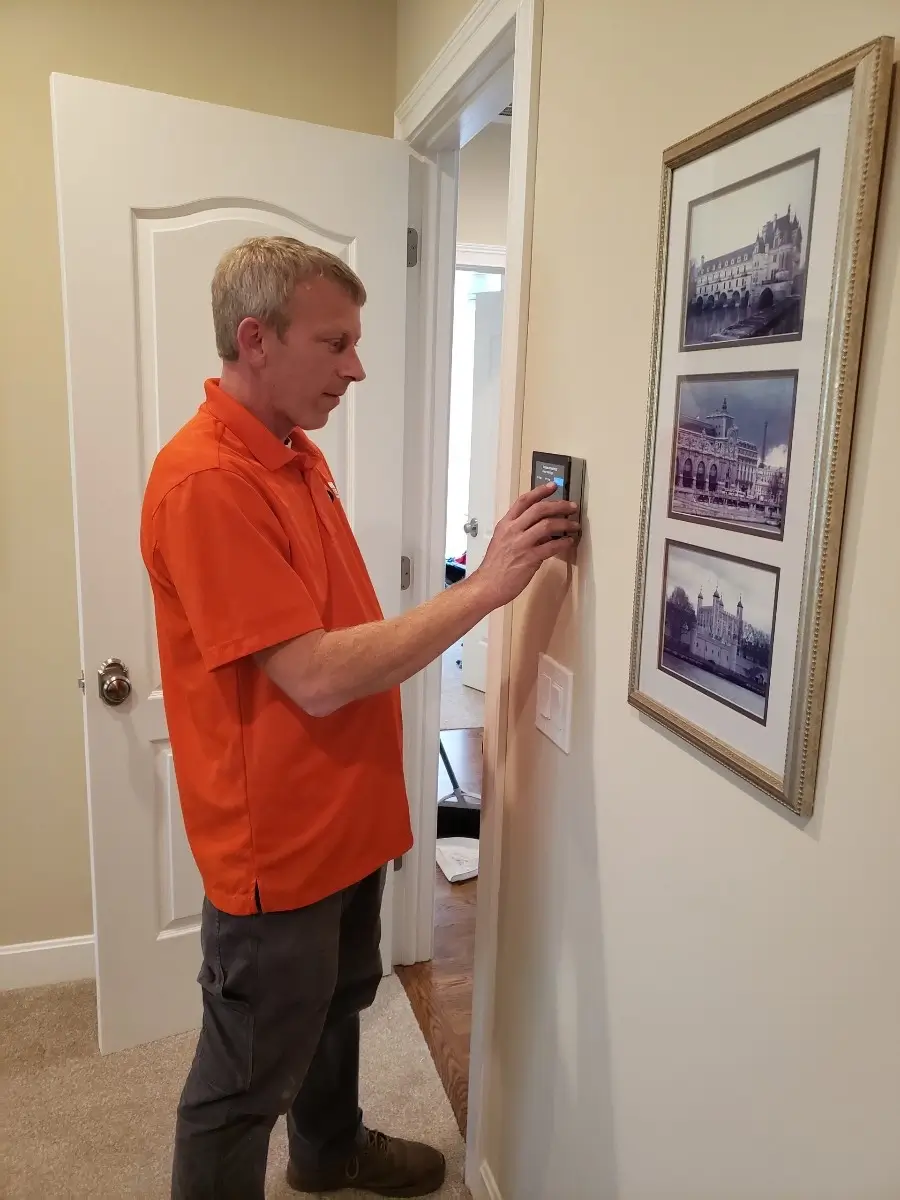When your thermostat displays a message instructing you to “call for service,” it typically means there is an issue with your heating, ventilation, and air conditioning (HVAC) system that requires professional attention. The specific message might vary depending on the thermostat brand or model, but the general idea is to alert you that something is not functioning properly and needs to be addressed by a qualified technician.
When the thermostat says call for service it doesn’t necessarily mean there is an issue with your furnace, heat pump or air conditioner. There are a variety of reasons this message may be displaying.
Possible reasons for the “call for service” message could include:
Malfunctioning components: There might be a problem with the thermostat itself or other crucial components within the HVAC system.
Sensor issues: The thermostat’s temperature sensors could be faulty or providing inaccurate readings, leading to heating or cooling problems.
System calibration: The thermostat may need calibration to ensure it accurately controls the temperature and responds appropriately to your settings.
System errors: The HVAC system might be encountering error codes that require professional troubleshooting to diagnose and fix.
Maintenance overdue: Regular maintenance is essential for HVAC systems, and if it’s been neglected for too long, the thermostat might prompt you to schedule a service call.
Filter replacement: In some cases, a clogged or dirty air filter can trigger an alert on the thermostat, reminding you to change it.
To address the issue, it’s best to follow the thermostat’s instructions and call for professional service. Attempting DIY fixes could potentially worsen the problem or void any warranties on your HVAC equipment. A qualified technician will be able to diagnose the root cause of the issue and carry out the necessary repairs or maintenance to get your system back to optimal performance.
Other Error Codes on Smart Thermostats and How to Resolve Them
WiFi Disconnected: Check your Wi-Fi network and ensure the thermostat is within range. Reconnect the thermostat to Wi-Fi in the device settings.
No Wi-Fi: Ensure your Wi-Fi network is operational. Try restarting your router and reconnect the thermostat to Wi-Fi.
Low Battery: Replace the thermostat’s batteries with fresh ones.
Communication Error: Check the wiring connections between the thermostat and the HVAC system. Make sure all connections are secure and functioning correctly.
Sensor Error: If this error persists, contact the manufacturer’s support for guidance, as it might require a replacement.
Heating/Cooling System Malfunction: Check the HVAC system for any visible issues, such as a tripped circuit breaker. If the problem persists, call a qualified HVAC technician for inspection and repairs.
System Unresponsive: Try power cycling the thermostat by turning it off and then back on. If the problem continues, check for firmware updates and apply them if available.
Update Failed: Retry the firmware update process. If it fails again, contact the manufacturer for further assistance.
Check Wiring: Verify that all wiring connections are secure and correctly installed. If you notice any damaged wires, consult a professional for repairs.
Temperature Range Exceeded: Adjust the set temperature within the thermostat’s allowable range.
Overheating Warning: Check the HVAC system for any blockages or obstructions that might be causing overheating. If the issue persists, call an HVAC technician for evaluation.
Always refer to the specific user manual of your smart thermostat for the most accurate information regarding error codes and troubleshooting steps. If you have followed the suggested resolutions and the problem persists, it’s best to contact the manufacturer’s customer support or seek assistance from a professional HVAC technician to diagnose and resolve the issue effectively.

